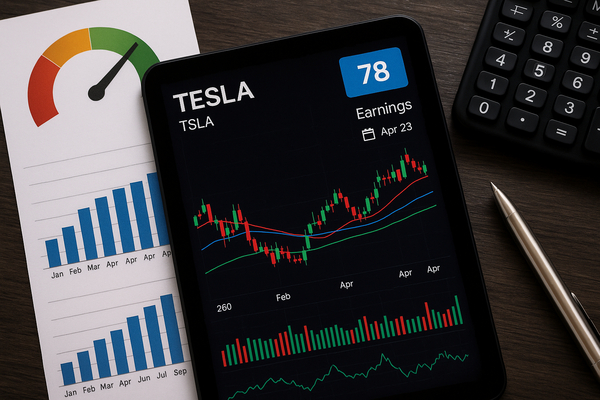
Labor Market Stalls While China Tech Surges
The U.S. job market is showing signs of inertia while Chinese technology stocks roar higher, and both developments matter now for investors weighing risk, returns and policy responses. In the short term, weak hiring clouds consumer spending and corporate confidence. Over the long term, persistent labor-market weakness could sap productivity and growth, while China’s push for AI self-sufficiency could reshape global supply chains and investment flows. The U.S. faces sticky inflation and limited policy room. Europe and Asia will feel trade and technology ripple effects. Emerging markets could benefit from capital reallocation if investors search for value outside the Magnificent 7.
The labor market is effectively “bed rotting,” a phrase used by Ed Al-Hussainy of Columbia Threadneedle Investments to capture the current stall in hiring, pay growth and job switching. Private payroll data is now central because federal jobs data was temporarily unavailable. The ADP report (NASDAQ:ADP) showed job losses in both August and September, while economists had expected modest job gains. Federal Reserve minutes flagged rising downside risks, including lower immigration, demographic trends and the labor-displacing effects of AI, a combination that risks dragging on employment and output.
That confluence complicates the Fed’s toolbox. Cutting rates to stimulate hiring would ease financing costs but would also narrow policymakers’ ability to respond if a deeper downturn appears. Sticky inflation makes aggressive easing risky. Market participants describe two broad scenarios. In one, firms hold payrolls steady until demand picks up, and unemployment stays low-to-moderate. In the other, hiring freezes give way to layoffs that begin in small businesses and then move up the corporate ladder, depressing consumption and triggering recession scares. History offers a cautionary note: it took more than a decade for labor markets to fully recover after the global financial crisis, and the recovery left many workers underemployed, a drag on productivity for years.
Strategists are not united on the outlook. Some still expect growth to continue, while others, like Kristina Hooper of Man Group, warn of a “rolling recession” in which different industries slow at different times. For investors, that disagreement argues for diversification and a search for undervalued pockets of the market, including international equities where valuations look more attractive. What to watch next: whether low hiring graduates into layoffs. Historically, reductions in payrolls begin in small firms and then broaden. Policymakers and markets will watch payrolls, initial claims and wage data for early signs of a turn.
At the same time, a separate market story is unfolding in China. After hitting lows in April, Chinese technology stocks have rallied more than 44% year-to-date, outpacing the U.S. Magnificent 7 over the same stretch. That rally has momentum because Beijing is explicitly backing homegrown AI efforts and discouraging purchases of certain foreign chips. The policy tilt is visible: officials have pushed to limit imports of advanced accelerators, and the government unveiled new restrictions on rare earth exports this week, a move clearly timed before the planned talks between President Trump and President Xi Jinping. The aim appears to be to strengthen bargaining leverage while accelerating domestic tech capability.
Markets are already pricing in several tailwinds for Chinese tech. Beijing is promoting local alternatives to foreign processors, attempting to link AI to manufacturing upgrades and renewables, and pursuing reflation to fight deflationary pressure in the economy. Foreign institutional ownership of many Chinese tech names remains low, leaving room for further inflows if sentiment improves. Valuations look cheap by some measures: the KraneShares CSI China Internet ETF (NYSEARCA:KWEB) trades below $42 versus an all-time high near $102, offering a stark contrast with pricier U.S. peers.
That cheapness helps explain bullish calls on China. Jay Pelosky of TPW Advisory argues Beijing holds a stronger hand than most investors appreciate, citing policy backing and industrial integration. Marta Norton of Empower highlights the government’s explicit push for domestic technology and the economic rationale for doing so. Yet Wall Street’s consensus still favors U.S. technology exposure as the primary AI play. Steve Englander of Standard Chartered notes that U.S. investment in AI remains roughly quadruple China’s, and many institutional investors hesitate to expand China exposure because of concerns about rule of law and geopolitical friction.
The Nvidia story sits at the intersection of these trends. Beijing’s push to prefer domestic chips directly affects companies that make advanced accelerators. Nvidia (NASDAQ:NVDA) remains the market’s standard-bearer for high-end AI processors. Efforts by China to limit access to those chips increase the appeal of local development, but they also create near-term winners and losers in global supply chains. Market participants see multiple implications: reduced sales growth for foreign chip suppliers in China; increased domestic spending to build alternatives; and higher geopolitical salience for companies whose products are critical to AI deployment.
Investors face trade-offs. A thaw in U.S.-China relations before the leaders meet could ease pressure and open windows for foreign firms. If talks turn contentious, however, export restrictions and reciprocal measures could slow global chip flows and raise costs for cloud providers and AI startups. The rare earth export restrictions underscore how resource policy can be used as leverage. That makes trade diplomacy and policy announcements short-term market drivers, while the pace of domestic Chinese investment and technology maturation will determine longer-term winners.
Finally, the broader market context matters. This weekend marks the three-year anniversary of the current bull market. The S&P 500 has risen more than 88% since that low, while the basket often called the Magnificent 7 has climbed roughly 166% since April 2023. Much of that advance has come from a handful of U.S. technology leaders, and that concentration shapes both sentiment and risk. Investors weighing allocation now must account for labor-market durability, China’s state-directed tech push, and how geopolitics could alter the paths of global supply chains and capital flows.
The immediate market checklist includes upcoming payroll readings, wage growth data, signs of hiring freezes turning into layoffs, and any diplomatic developments between Washington and Beijing. Over the medium term, watch domestic Chinese chip developments, changes in foreign ownership of Chinese tech, and the Fed’s assessment of inflation persistence. Policymakers and corporate boards will need to balance short-term stimulus against the risk of giving up policy flexibility. For investors, the present combination of a stalled labor market and a bifurcated tech rally argues for careful positioning, global diversification, and attention to policy signals.
Consumer spending still rests on the health of employment, as several central-bank officials have emphasized. If the job market requires an alarm to wake up, that alarm could arrive in economic data, corporate reports, or policy action. Until then, markets will price a mixture of optimism about AI-driven growth and caution about a labor market that has stopped moving.








